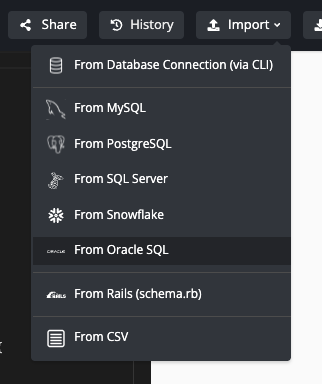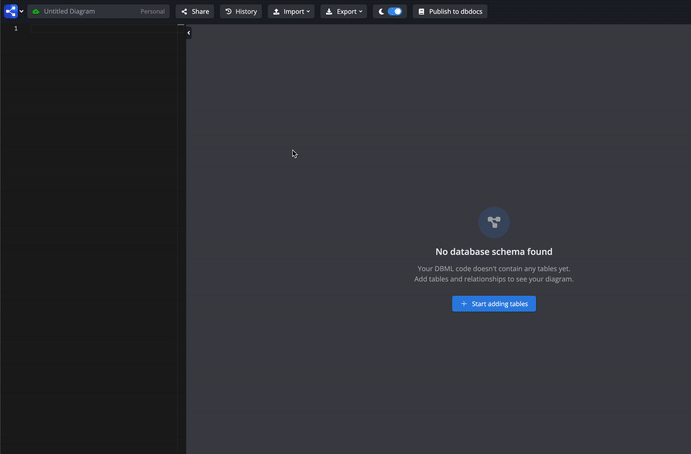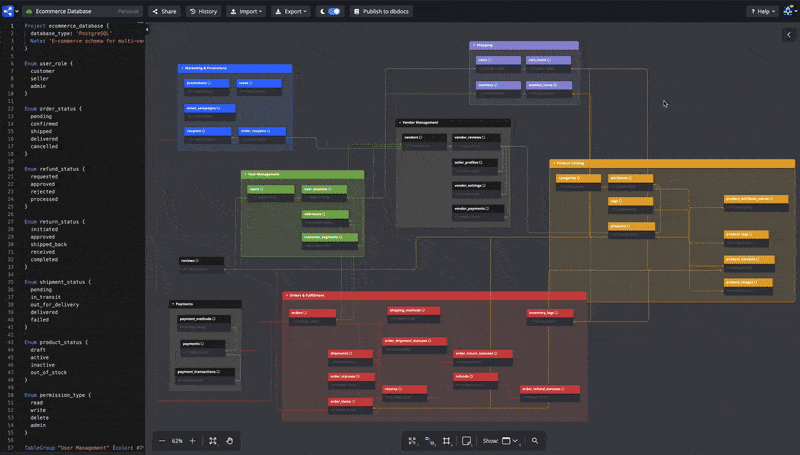🤖 AI Assistant Joins the Party!
🎅🏼 Ho ho ho, database enthusiasts!
While kids are unwrapping exciting presents this Christmas, dbdiagram users aren't left out—Santa's coming to town with our shiny new AI Assistant as a special present.
Imagine building or refining your database diagrams simply by chatting naturally. Whether you're creating new tables, adding relationships, or seeking suggestions for best practices like indexes and data types, just describe what you need, and it handles the rest.
Use AI Assistant now to boost your workflow, so you can wrap up early and enjoy more quality time with loved ones.
Note: The AI Assistant is included in our paid plans at no extra cost.
📚 Learn more about AI Assistant in our documentation →
Please give this feature a try and let us know what you think.



